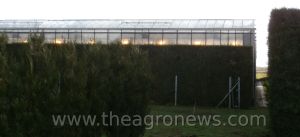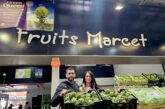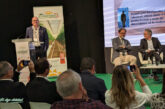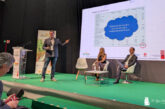Hablar de Holanda y Bélgica es sinónimo de distribución. Aunque son productores de frutas y hortalizas su negocio se encuentra, en buena medida, en la reexpedición de productos de otros países. Es posible, por ejemplo, ver en un mercado de Abu Dhabi (Emiratos Árabes Unidos) pimientos de la cooperativa Murgiverde, pero están enviados por avión desde Holanda, no desde España.
Speaking of Holland and Belgium is synonymous with distribution. Although they are fruit and vegetable producers their business is, to a large extent, to resend products from other countries. It is possible, for example, to see a market in Abu Dhabi (United Arab Emirates) peppers of the cooperative Murgiverde, but they are sent by plane from Holland, not from Spain.
Más allá del tema comercial está el uso intensivo de tecnología que aplican estos países a sus cultivos protegidos. Es curioso el modo que tienen para diferenciar sus invernaderos de los de los países del sur, a los de España los denominan “estructuras sin calefacción”. Y es que en las zonas productoras del norte de Europa la calefacción es un elemento imprescindible. En la imagen que acompaña este texto se observa un invernadero de Flandes (norte de Bélgica). La fotografía la hice este invierno, a media tarde. Se pueden apreciar con claridad las lámparas que hay en su interior para facilitar la fotosíntesis de las plantas.
The intensive use of technology that these countries apply to their protected cultivations is beyond the trade issue. It is curious the way they have to differentiate their greenhouses from the Southern countries’ ones, they call the ones from Spain “unheated structures.” And the thing is that in producing areas of Northern Europe heating is a key element. In the picture accompanying this text, we can see a greenhouse of Flanders (Northern Belgium). I took the picture this winter, in the middle of the afternoon. We can clearly see the lamps that are inside to facilitate the photosynthesis of the plants.
Y es que en estos países la falta de luz la suplen con tecnología e innovación. No voy a entrar en la discusión de si su modelo agrícola es más o menos sostenible, ya habrá tiempo para ello, pero si me gustaría apuntar que su famosa cogeneración no es un sistema basado en energías renovables, ya que en ella se usa el gas natural, que no habría que olvidar es una fuente fósil. Sí quiero dibujar una estampa que describe muy bien la agricultura bajo cristal en Holanda. Resulta impresionante observar por la carretera cuando te diriges a las zonas de los invernaderos, y aún no hay luz de día, el gran áurea de luz que emana de estas explotaciones – como un gran halo – que da idea de lo que ha invertido la mano del hombre para crear este efecto. Es resultado de la iluminación artificial nocturna, sobre todo en cultivos ornamentales, que son los que por su valor añadido pueden compensar ese sobrecoste. Por ley tienen que utilizar pantallas para evitar la contaminación lumínica, aunque como no son estancas, sí se ve esa aureola alrededor de los invernaderos.
And the thing is that in these countries they supply the lack of light with technology and innovation. I will not get into the discussion of whether their agricultural model is more or less sustainable, there will be time for that later, but I would like to point out that his famous cogeneration is not a system based on renewable energy as it uses gas natural and we should not forget that it is a fossil source. I do want to draw a picture that describes very good the agriculture under glass in the Netherlands. It is amazing to watch the road when you go to areas of greenhouses, and still there is no daylight, the great golden light emanating from these farms – as a large halo – which gives an idea of what the hand of man has invested to create this effect. It is the result of artificial nighttime lighting, especially in ornamental cultivations, which are those whose added value can compensate this additional cost. By law, they have to use screens to avoid light pollution, but as they are not hermetic, we can see that aura around greenhouses.
En cuanto al fertirriego prácticamente el 100% recirculan el drenaje, pero también usan sustrato, cuyo proceso de producción conlleva un coste ambiental. También es interesante estudiar la medición de la huella del carbono por cada kilo producido o cómo a través de un sistema que recuerda el funcionamiento de la olla exprés logran elevar la temperatura del agua con la que dan calor al invernadero. Pero todo esto lo dejaremos para una segunda parte.
As for fertigation virtually the 100% recycle drainage, but also they use substrate, whose production process involves an environmental cost. It is also interesting to study the measuring of the carbon footprint per every kilo produced or how through a system reminiscent of the functioning of the pressure cooker they can raise the temperature of the water with what they heat up the greenhouse. But we will leave it all for a second part.










